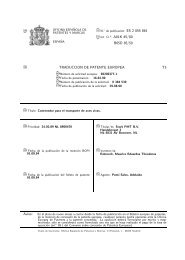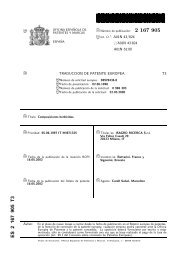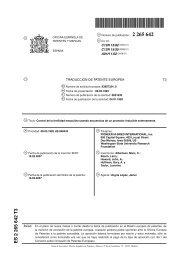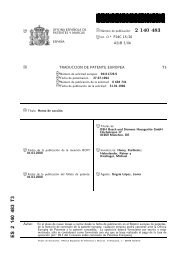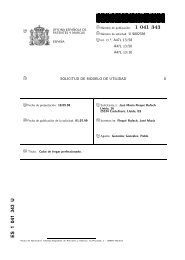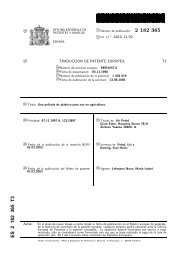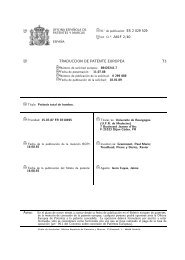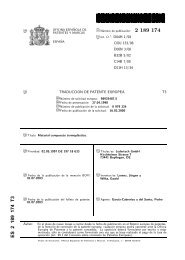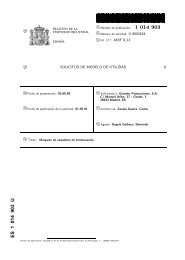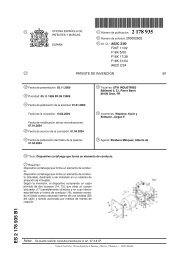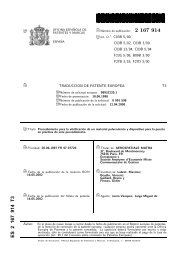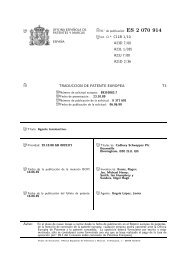USO DE COMPUESTOS PARA ELEVAR LA ACTIVIDAD DE ... - Inicio
USO DE COMPUESTOS PARA ELEVAR LA ACTIVIDAD DE ... - Inicio
USO DE COMPUESTOS PARA ELEVAR LA ACTIVIDAD DE ... - Inicio
Create successful ePaper yourself
Turn your PDF publications into a flip-book with our unique Google optimized e-Paper software.
5<br />
10<br />
15<br />
20<br />
25<br />
30<br />
35<br />
40<br />
45<br />
50<br />
55<br />
60<br />
65<br />
Ejemplo 250<br />
ES 2 217 754 T3<br />
(R)-N-{2-Cloro-4-[4-(pirrolidin-1-ilsulfonil)fenil-sulfanil]fenil}-2-hidroxi-2-metil-3,3,3-trifluoropropanamida<br />
Se añadió cloruro de cobre (I) (0,038 g) a una mezcla de (R)-N-[2-cloro-4-mercaptofenil)-2-hidroxi-2-metil-<br />
3,3,3-trifluoropropanamida (Ejemplo 210) (0,21 g), N-(4-yodobencenosulfonil)pirrolidina (0,258 g) y metóxido sódico<br />
(0,042 g) en DMA (5 ml). La mezcla se calentó a 150ºC con agitación durante 4 horas, después se enfrió, y el<br />
DMA se eliminó por evaporación. Se añadió acetato de etilo (20 ml) y agua (20 ml), y la mezcla se filtró. La capa<br />
acuosa se extrajo con acetato de etilo (3 x 20 ml), y las capas orgánicas se combinaron y se secaron. El material volátil<br />
se eliminó por evaporación, y el residuo se purificó en una columna Mega Bond Elut con gel de sílice, eluyendo con<br />
metanol/DCM 0-10%, para dar el compuesto del título (0,16 g) como un sólido. NMR (CDCl 3): 1,75(s, 3H), 1,75-<br />
1,85(m, 4H), 3,2-3,3(m, 4H), 4,0(s, 1H), 7,2-7,3(m, 2H), 7,4-7,45(m, 1H), 7,6(s, 1H), 7,7(d, 2H), 8,45(d, 1H), 9,15(s,<br />
1H); MS (ESP − ): 507<br />
101



